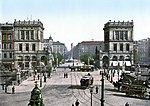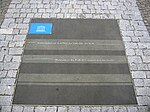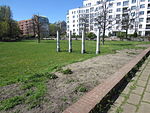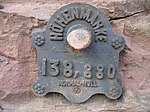Hallesches Tor (Berlin U-Bahn)
Berlin U-Bahn stationsBuildings and structures in Friedrichshain-KreuzbergRailway stations in Germany opened in 1902
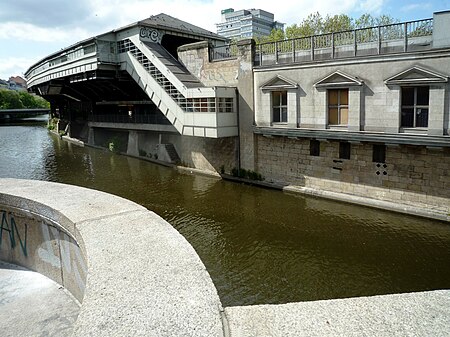
Hallesches Tor is a Berlin U-Bahn station in the central Kreuzberg quarter, served by lines U1, U3, and U6. It is named after the historic Hallsches Tor (Halle Gate) of the Berlin Customs Wall, erected in the 18th century.
Excerpt from the Wikipedia article Hallesches Tor (Berlin U-Bahn) (License: CC BY-SA 3.0, Authors, Images).Hallesches Tor (Berlin U-Bahn)
Hallesches Ufer, Berlin Kreuzberg
Geographical coordinates (GPS) Address Website Nearby Places Show on map
Geographical coordinates (GPS)
| Latitude | Longitude |
|---|---|
| N 52.497777777778 ° | E 13.391111111111 ° |
Address
U Hallesches Tor
Hallesches Ufer
10969 Berlin, Kreuzberg
Germany
Open on Google Maps

